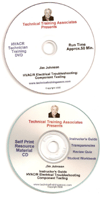Now, some 25 years later, with Standard 90.1-1999 established by the United States Department of Energy (DOE) as the commercial building reference standard for state building codes, ASHRAE again plans to offer training on the standard—this time, aimed at code officials. The "train-the-trainer" program will provide training for ASHRAE chapter representatives, who in turn, will train code officials and other interested persons in their local geographic area.
A pilot workshop on ANSI/ASHRAE/IESNA 90.1-2001, Energy Standard for Buildings Except Low-Rise Residential Buildings, will be held Oct. 22, 2002, in Atlanta. Representatives from some 15 ASHRAE chapters are scheduled to attend. If successful, the program likely will be expanded.
While the program is aimed primarily at code officials, it is suitable for architects, engineers, and HVAC system designers, and they are invited to participate. Mark Halverson of Battelle Pacific Northwest Laboratory will conduct the workshop, which is sponsored by ASHRAE and the DOE.
"With the recent DOE determination that the 1999 standard improves energy efficiency in commercial buildings over the 1989 standard, many states are upgrading their energy standards to be in compliance with this legislation," Bruce Hunn, ASHRAE director of technology, said. "Because of this, several states have adopted, or are in the process of adopting, the 1999 standard or the more recent 2001 standard. Thus training for code officials in jurisdictions adopting the standard is needed. In some cases, notably Texas, this need is urgent."
ASHRAE also is working with other organizations to encourage adoption of the 2001 standard in model building codes. The 2001 standard is expected to be referenced in the 2003 International Energy Conservation Code (IECC). The IECC is a model code that may be adopted by code jurisdictions either in the United States or internationally.
ASHRAE recently signed a partnering agreement with the National Fire Protection Association (NFPA) to incorporate the 2001 standard in a consensus code set. Along with ASHRAE Standard 90.2-2001, Energy-Efficient Design of Low-Rise Residential Buildings, these standards will comprise the energy code portion of the American National Standards Institute-approved NFPA code set, which will be published in April 2003.




